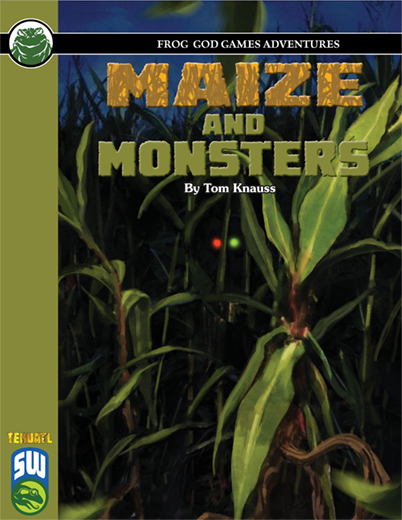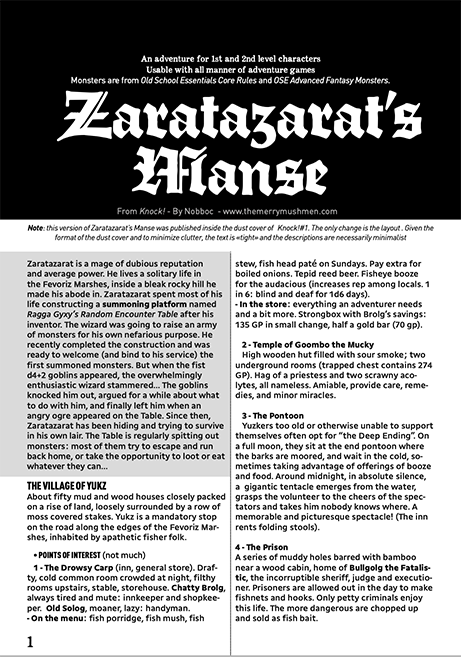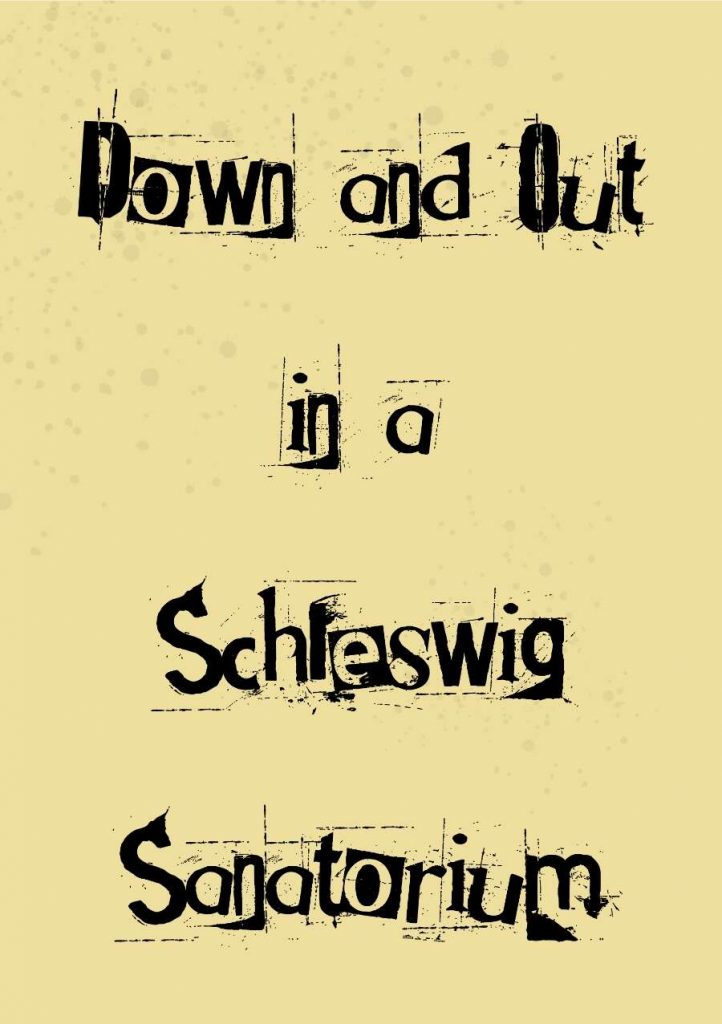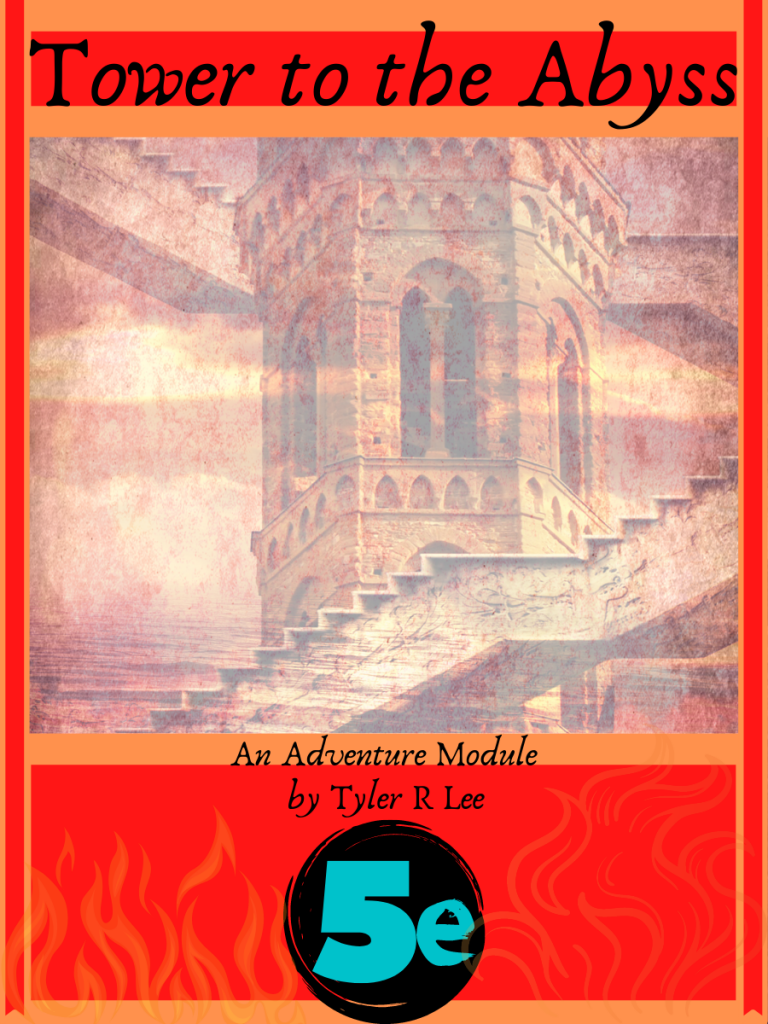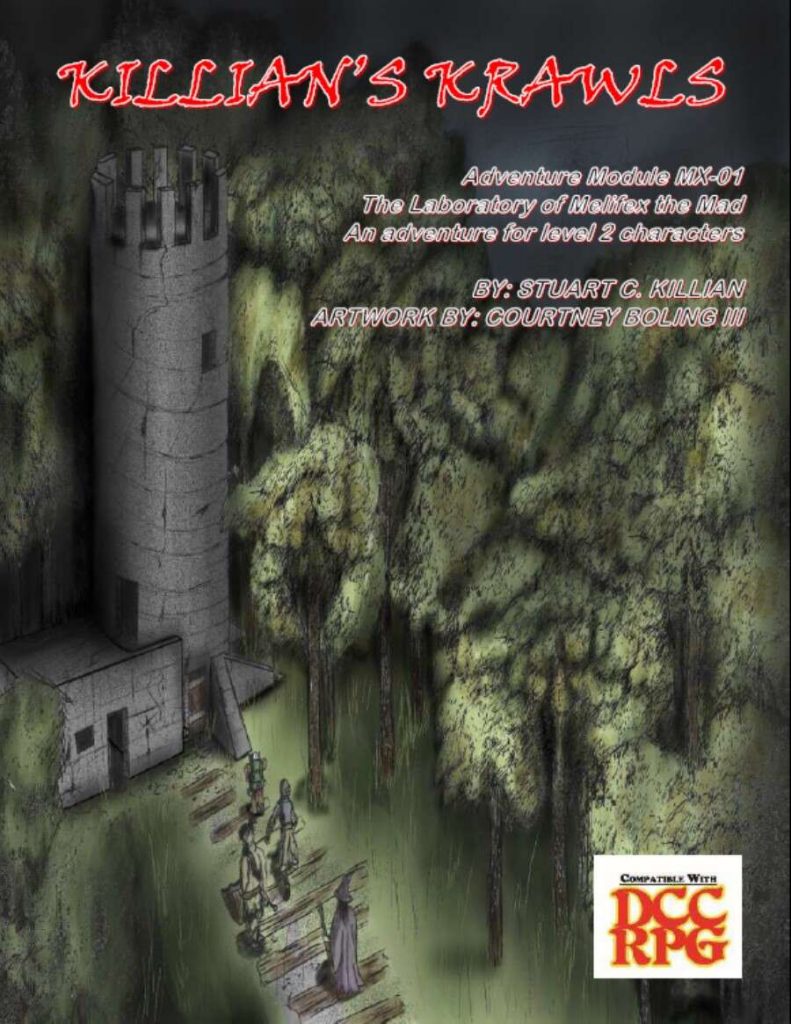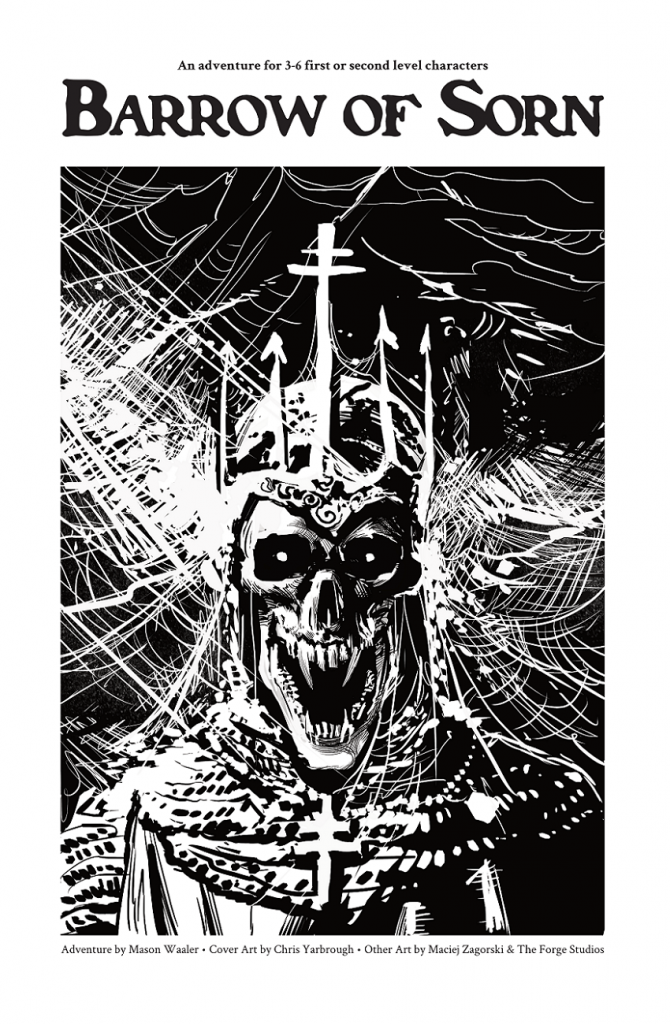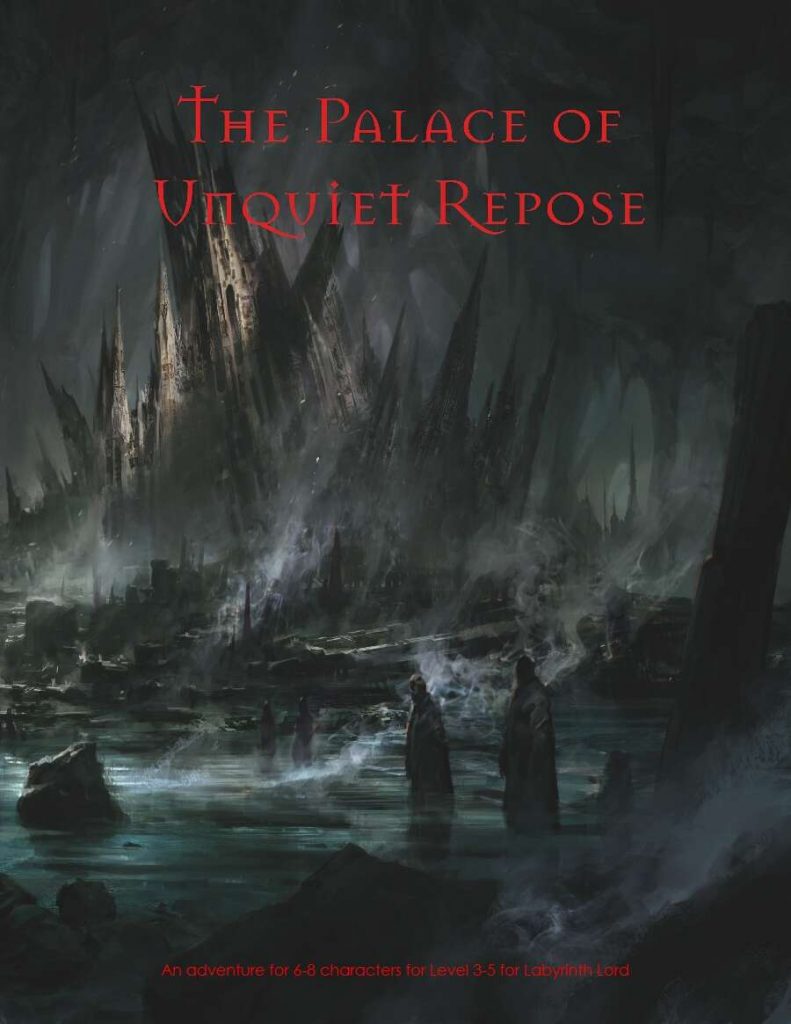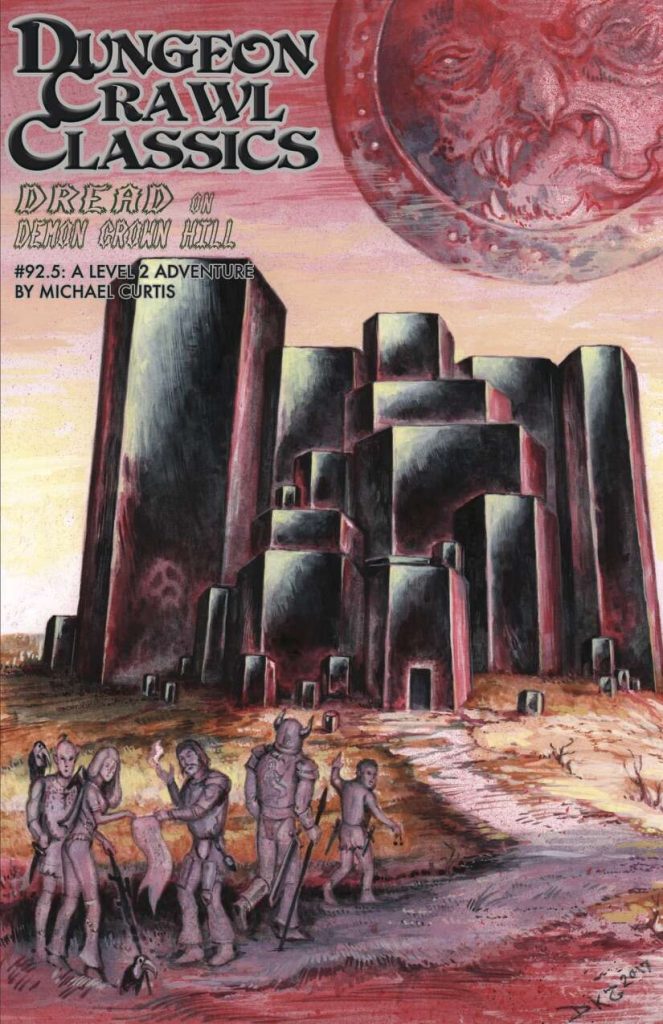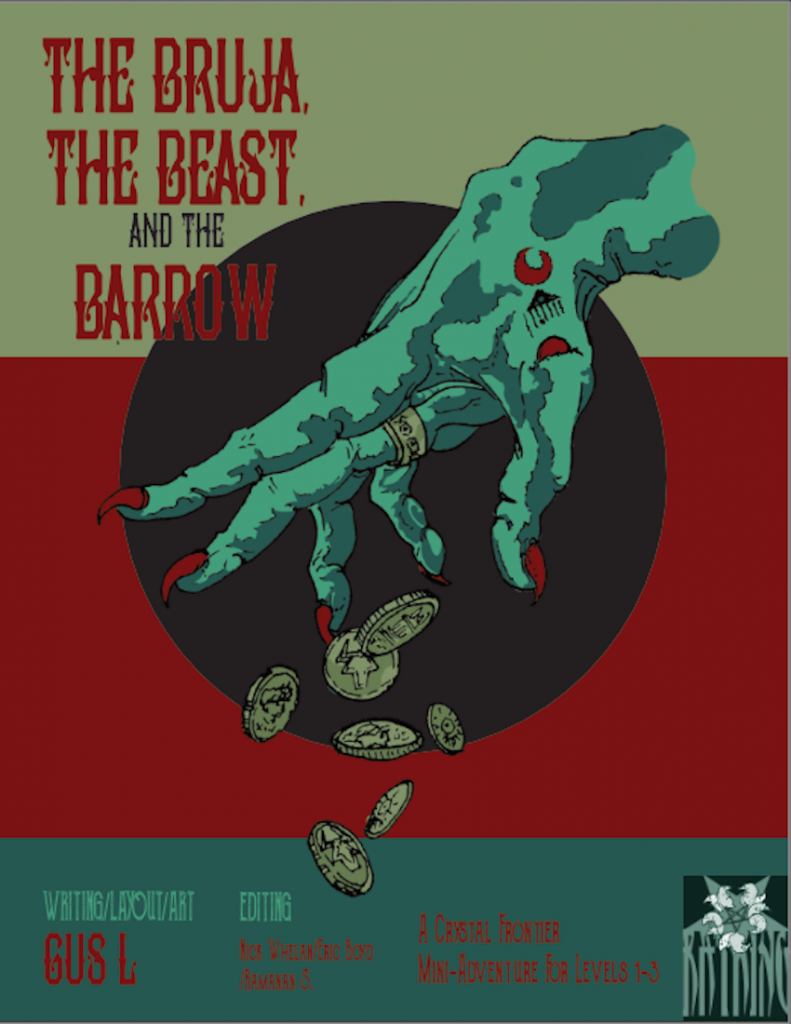
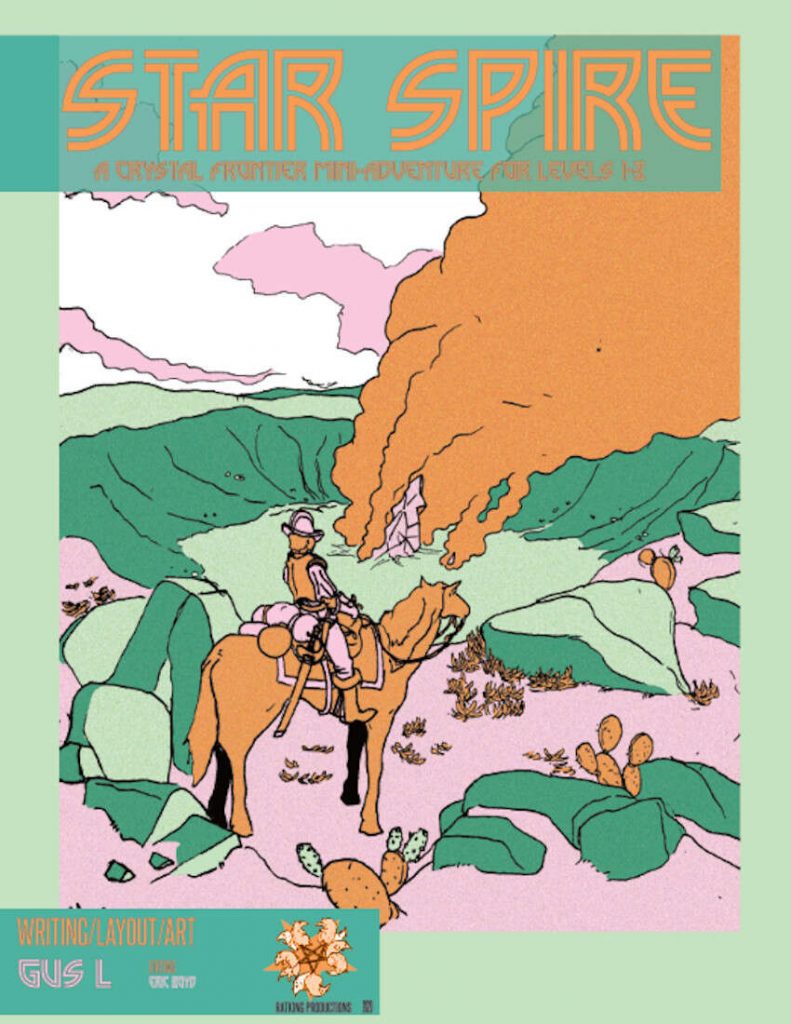
By Gus L Ratking Productions B/X Levels 1-2
1. The desert night is shattered by the fall of a crystal shard, a sky tomb filled with treasures from beyond the fixed stars and ready to plunder. 2. Curse and disease are endemic ailments of the adventuring life, and finding reliable treatment is never an easy task in the wastelands of the Crystal Frontier, but Marble Eye, the witch of Pickbone Mound is said to have the panacea for everything. He’ll take all your hard earned plunder, but like all witches the canny old bale worker would rather make a deal and there’s something in the tombs beneath his cursed hut that needs attention.
These two adventures have seven pages total, five of which are the adventures proper. One is set in a crashed crystal meteor, an exploration adventure, and the other in a barrow tomb, given the task to bring a pig to a certain room in it by a wizard you seek a boon from. They are evocatively imagined, interactive, and close enough on usability to meet the needs of something that is only 2-3 pages long. IMAGINED rather than plodded, I would summarize.
I’m trying to not review short one to three page things; they just don’t seem to hit very often and make too many sacrifices. But, there are exceptions, and, by combining two from the same designer then there are some interesting things to say about what’s going on. And there’s are interesting.
Gus isn’t fucking around. There’s a cover and then a short sentence or two of background and then the room keys, spread out over the remaining pages. No real filler, except for some artwork that is stylized and interesting. (As an aside: … and, interesting color choices also. The art style and color choices certainly work together well to create something different without falling over the edge to pretentious.)
The intros here are short but imply things. The things implied are further adventure and how to integrate it in to your campaign. Recognizing the limitations of the page count, the intro does double duty, setting up the adventure in such a way that the DM can expand on it. “Across the dizzying gulfs you watch it fall, a streak of burning pink that blots the fixed star and drowns the nebula of the night in its blaze. The impact echoes, only a few miles to the east, a cacophony that banishes sleep, and now at dawn you stand above the crater which cracks and pops as the sand cools to crazed glass around a bent spire of tomb crystal, ready for the plunder.” Flowery language aside (this is the intro/background/inspiration section, and that’s all there is, where it is generally allowed) you can see how you, as the DM, might integrate this event in to your campaign. And so it is with the second adventure also. These very brief set ups with things implied for the DM to integrate them in to the game. No pages and pages and pages of backstory. “Hey, here’s this thing. And here, be inspired to integrate it in to your game.” That’s the way you do a fucking background!
Both adventures have around eight encounter locations in them, and both have a couple of encounters “outside” the dungeon before you get to the “inside” portions. In the Star Spire it is a group of bandits who ride up and then the burning sands and getting in to the thing. In the Barrow/Brujah, it is the wizards hut, and his yard/fence. Both serve as a kind of front yard to the adventure, and things that can hang on and provide more than a brief hit for the actual encounter. “The Innocents”, a group of big, dumb farm boys led by Bruno, a scruffy veteran brigand, “friends” of Graf the duelist, just having arrived on lathered horses. Greedy and murderous, but cowards. Perfect! Perfect! The party has to deal with them before they go in. Maybe they are still there when they come out, weakened. And, then, note the name drop of Graf … a hook to integrate in to a follow up game. The adventure just drops this shit in over and over again, allowing the DM to build it in to more than the words on the page. That’s good design.
And note the writing. Lathered horses. Big dumb farm boys. Streaks of BURNING pink and a cacophony of sound. Sand cooling to crazed glass. This is good writing. The scenes spring to mind. You can immediately both imagine it … and, there are great black chunks in your imagining that your mind races to fill in. And it doesn’t feel fake. It doesn’t feel like someone just said “let me open the thesaurus and fill in an [adjective/adverb] before each noun.” They feel IMAGINED rather than workmanlike. And the adventure delivers on this time and again.
Let’s look at how Gus handles magic items. “A gleaming copper spear”, engraved with its name Biter. Sweet! A brief description but one that stands out in a sea of “+1 sword” magic items. You WANT to know more about it. It strikes as a magical weapon, but is cursed to inflict damage to the wilder on a fumble … and maybe kill them if thrown. Cursed backbiter! Essentially, the one from the 1DMG, but brought to life! Another one “drinks the blood of those it stabs”. It’s +1 and gives the wielder 1hp. That one line though, “drinks the blood of those it stabs”! … that gives the DM something to work with! Short, but leads to more. This Is The Way. That Vampire Doctor Spam man approves!
The adventures, proper, are quite good. There are things to steal, pry out of walls, people to talk to and make deals with and, of course, horrible monsters with GREAT descriptions.
There are a couple of areas that could be better. In places the map legends run in to the “hard to read” territory. Black text on a dried blood oval, while evocative, is just a few shades too far over the line for my eyes. And the text is pushing the limits of use in places. The descriptions ARE short, they have to be since the entire thing is only a few pages long They are using a paragraph style with bolded keywords. They start off well, with obvious things first and more full descriptions kind of mixed in. A mural with horses, for example, to give my synopsis of a much better written description. This allows the DM to say “there’s a mural on the walls” and then follow up with what’s on it when the players start investigating. There’s a limit to how much you can do with this style and still have it be easily usable during play. I’m not saying the descriptions are over the line, but, they are getting a bit close. Triple column, some fancy fonts for room numbers … the eyes start to wander. I suspect that the lengths here are just about as far as this style of organization can take an adventure. More and you need to switch and/or stick in some extra helping boxes, etc, to make things clearer.
GREAT fucking adventure for only a dollar. I wish more adventures were like this. If things were at least this good then I wouldn’t be reviewing adventures. Imaginate the fuck out of it, indeed!
These are $1 each at DriveThru. The preview shows you everything, so you can see what you are getting in to. Perfect.
https://www.drivethrurpg.com/product/340123/Star-Spire?manufacturers_id=18552?1892600

